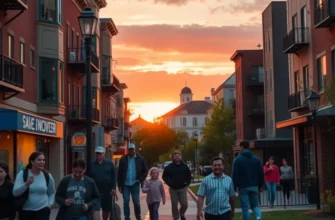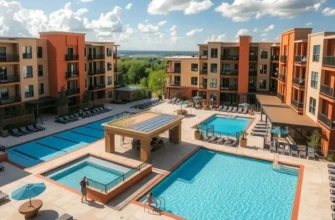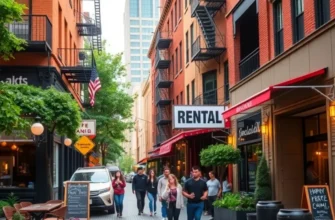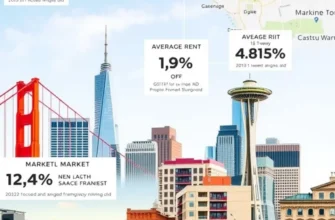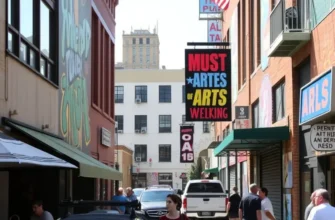Finding the perfect apartment in a bustling tourist city can be an exciting yet daunting task. Whether you’re a young professional seeking your first rental, a student looking for the optimal location near campus, or a family hoping to secure a cozy space in a vibrant community, navigating the local rental market requires strategy. Popular cities like New York, San Francisco, and Miami have their unique characteristics, influencing everything from rental prices to neighborhood vibes. Understanding these nuances can help you make a more informed choice while searching for a home that fits your lifestyle and budget. Supplementing your apartment search with local insights not only enhances your chances of success but also enriches your overall relocation experience. Let’s delve deeper into practical strategies for apartment hunting across tourist-laden urban landscapes, catering to diverse needs and preferences.
Understanding Local Rental Markets

Each tourist city in the U.S. has its unique rental market, deeply influenced by the dynamics of tourism. Understanding these variances is crucial for anyone moving to cities like Orlando, San Francisco, or New Orleans. These cities are not only magnets for tourists but also attract diverse groups of renters including students, young professionals, and families.
Tourism significantly impacts demand spikes in these markets. In Orlando, for instance, vacation seasons see a surge in both temporary and long-term rentals. With a plethora of theme parks and attractions, short-term rentals gain popularity among tourists, inadvertently raising rental prices for locals seeking longer leases. This situation prompts many who move to Orlando to secure leases well in advance, especially if aiming for popular tourist-adjacent neighborhoods.
In San Francisco, the influence of tourism on housing intertwines with the tech industry’s impact. Neighborhoods like Haight-Ashbury and Union Square witness rental increases during peak tourist seasons as visitors flock to iconic landmarks. The rental market remains competitive year-round due to high demand from global tourists and tech workers, making it essential for prospective renters to adapt quickly to fluctuating prices. With students from institutions like UC Berkeley adding to the mix, urban centers become a maze for anyone unfamiliar with bidding wars over apartments.
Meanwhile, New Orleans presents a distinct scenario where historic charm draws continuous crowds, leading to cyclical rental trends. Festivals like Mardi Gras exponentially increase short-term and long-term rental prices as visitors pour in. Neighborhoods such as the French Quarter and Tremé often see year-round demand, influenced by their cultural allure and proximity to event venues. This situation can be challenging for families looking to nestle down, who must navigate between the high demands of these tourist hotspots and southern areas offering more stability.
Across these cities, an understanding of neighborhood growth can also guide renters effectively. Tourism development projects often drive infrastructural improvements, turning previously overlooked areas into desirable locales. In Orlando, the rise of Lake Nona as a burgeoning community highlights this trend. Whereas in San Francisco, Mission Bay revitalization shows how tech investment can reshape rental landscapes.
Renters relocating to such dynamic cities need to tailor their strategies by recognizing these patterns. From knowing when to engage in apartment hunts to exploring the potential of emerging neighborhoods, understanding local contexts empowers their decisions. Familiarizing oneself with local trends and timing in accordance with tourism cycles allows for smarter financial planning and peace of mind.
For renters interested in financial preparedness during these transitions, resources on renter credit improvement tips might offer valuable insights.
Practical Tips for Effective Apartment Hunting

Finding the perfect apartment in a tourist city requires a strategic approach. Beyond scanning listings and attending showings, renters must harness the power of technology and community networks. Leverage local apps that highlight off-market listings and connect with agents familiar with your desired area. These tools often provide insights into hidden gems and enable you to set alerts for new listings matching your criteria.
Tapping into local community forums can be invaluable. Join online groups specific to your new city to gain firsthand advice from residents. These platforms can provide recommendations on neighborhoods and alert you to word-of-mouth listings that aren’t officially advertised. Often, residents looking to sublease or find new tenants share opportunities within these groups first.
Open houses are not only about seeing an apartment; they’re networking events. Engage with other attendees and realtors to gauge interest levels and competition for the space. At open houses, prepare to ask questions about the neighborhood, amenities, and typical tenant profiles. This information helps tailor your negotiating strategy if you decide to pursue a lease.
Negotiating rent requires a balance of research and communication. Identify comparable rentals in the area to establish a baseline, then leverage this data in discussions with potential landlords. Express your strengths as a tenant, such as steady employment or a solid rental history, to justify any proposed reductions. In busy tourist cities, some landlords may be open to negotiation, especially during off-peak moving seasons.
When prioritizing your search, distinguish between might-have and must-have features. Essential features might include proximity to public transportation or a pet-friendly policy. Secondary traits like a balcony or extra storage space fall under nice-to-have. Such clarity helps quickly eliminate unsuitable options, streamlining your decision-making process.
Families, professionals, and students all have distinct requirements. Families may need access to good schools and parks, while professionals might prioritize a short commute. Understanding your group’s priorities saves time during your search.
Consider enlisting the help of rental agencies that specialize in your target city. While these services often come with a fee, their local expertise can expedite your search and provide access to exclusive listings. Professional agents navigate fast-moving markets proficiently, saving you time and frustration.
Secure connections in your new city via related services and informational platforms. These often have comprehensive resources for finding apartments in vibrant areas. For instance, if you’re looking for places near university campuses, their local guides can be an excellent start. These platforms offer curated content to simplify your search in highly competitive environments similar to apartments near university locales.
In summary, effective apartment hunting in tourist cities demands a mix of digital tools, community engagement, and professional services. By maintaining focus on priorities and being prepared to negotiate, you can secure your ideal rental in these dynamic markets.
Final words
Successfully navigating the apartment hunt in tourist cities requires a mix of knowledge, strategy, and local insights. Recognizing the uniqueness of each city’s rental market allows you to make better decisions tailored to your specific needs and lifestyle. This journey can be both fulfilling and manageable when you leverage tips that help streamline the search while being aware of the city-specific factors that could impact your choices. By keeping an open mind and utilizing available resources, you can find a space that not only meets your requirements but complements your new adventure in a vibrant community.


